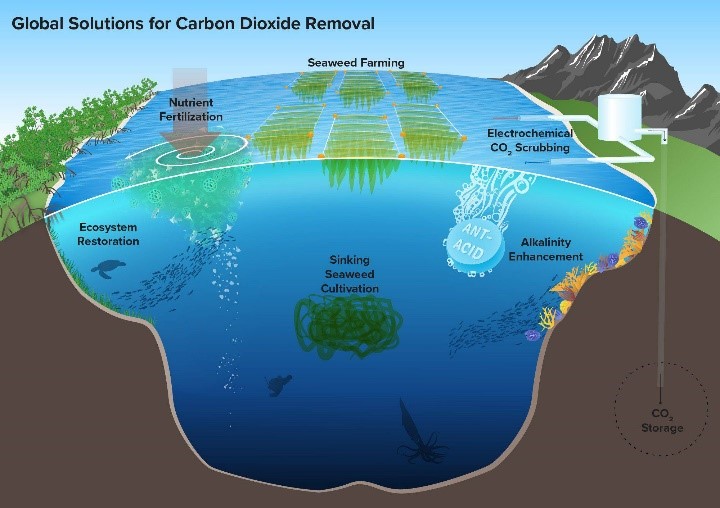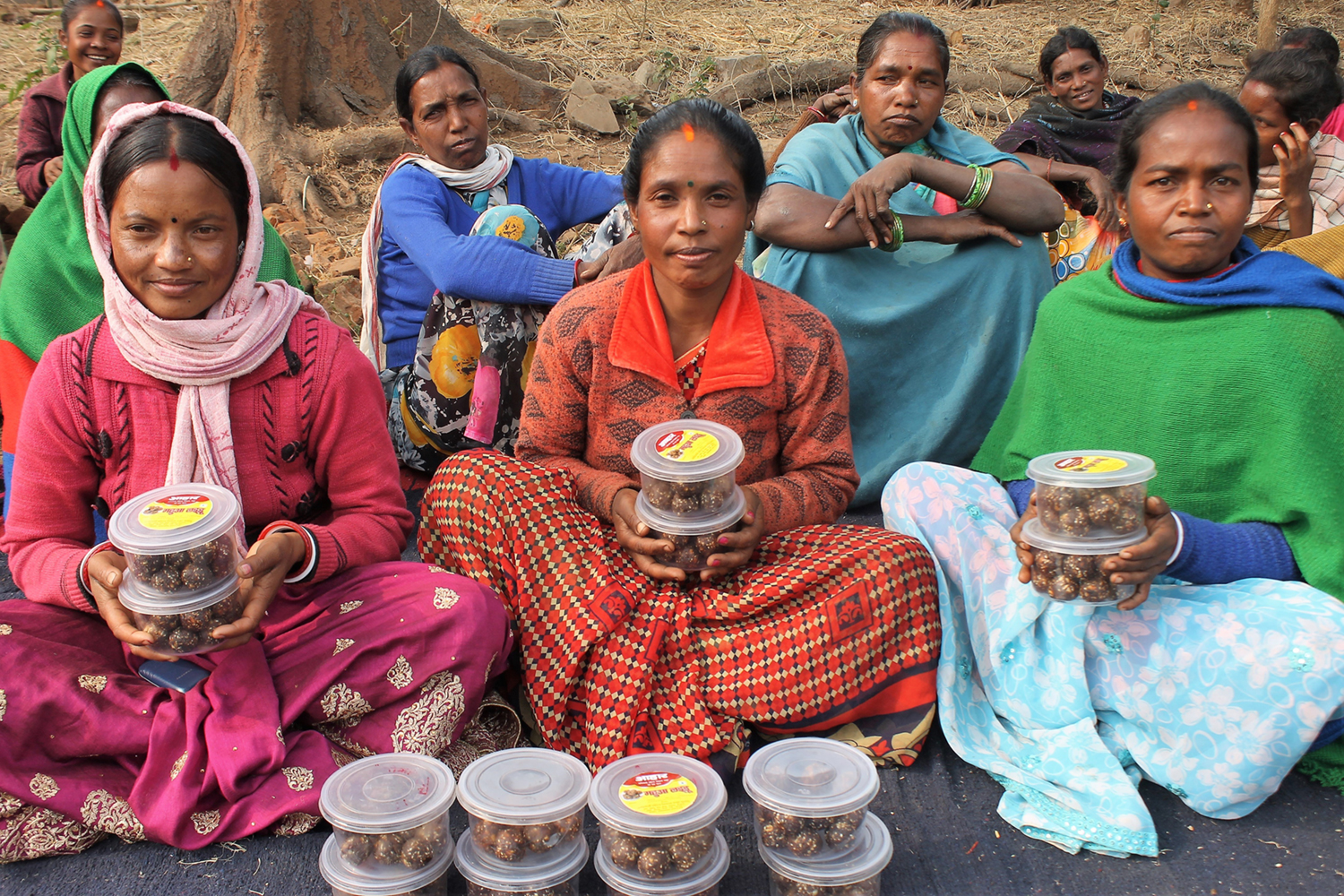Description

Disclaimer: Copyright infringement not intended.
Context
- United Nations Environment Programme (UNEP) in a press release said that countries must go further than the current pledges under the 2015 Paris Agreement to limit global warming to 1.5°C with no or low overshoot during this century.
- According to the Emissions Gap report, delaying greenhouse gas (GHG) emissions reduction will further increase the future dependence on carbon dioxide removal (CDR) from the atmosphere.
What is carbon dioxide removal?
- Carbon dioxide removal, or CDR, is using technologies, practices, and approaches to remove carbon dioxide from our atmosphere through deliberate and intentional human actions.
- This includes traditional methods like afforestation, as well as more sophisticated technologies like direct air carbon capture and storage (DACCS). Natural processes, like the growth of a natural forest, are not CDR methods.
- CDR also includes durable and efficient storage of extracted carbon dioxide in natural reservoirs like soil and vegetation, or in manufactured products like carbonated drinks.

What are the different CDR methods?
Afforestation/reforestation
- Converting abandoned or degraded agricultural lands into forests can contribute to negative emissions.
- Additional plants and trees can sequester more carbon dioxide from the atmosphere into the soil. However, inappropriate choices of locations for afforestation can lead to increased competition for land, potentially limiting options for food production and biodiversity conservation.
- According to the Intergovernmental Panel on Climate Change (IPCC), afforestation is a relatively cheaper method of CDR, costing approximately under $240 per tonne of CO2. The storage time can last from decades to centuries.
Biochar
- Biochar is the substance produced by burning organic waste from agricultural lands and forests in a controlled process called pyrolysis. Although it resembles common charcoal in appearance, the production of biochar reduces contamination and is a method to safely store carbon.
- Pyrolysis involves the burning of wood chips, leaves, dead plants, etc. with very little oxygen, and the process releases a significantly small quantity of fumes. Biochar is a stable form of carbon that cannot easily escape into the atmosphere.
- IPCC estimates biochar as a CDR method costs $10-345 per tonne of CO2. The downside of the technology includes negative impact from dust and increased competition for biomass.
BECCS
- Bioenergy with carbon capture and storage, or BECCS, is similar to biochar in the sense that it also uses biomass to produce energy while preventing the release of carbon dioxide into the atmosphere. However, BECCS involves bioenergy production, often through combustion to generate electricity or heat. The resulting CO2 emissions from this combustion are captured and stored underground, preventing them from contributing to the greenhouse effect.
- BECCS sequesters photosynthetically fixed carbon as post-combustion CO2. Biochar, on the other hand, is made by burning organic material and the carbon is stored in the resulting charcoal-like substance. According to a research paper published in 2022, BECCS delivers immediate and permanent CDR, but its efficiency can be impacted by changes in land use, thereby significantly delaying the CDR process. Biochar shows low CDR efficiency – in the range of 20–39% – when it is first integrated with the soil, regardless of the raw biomass supply considered. Its CO2 removal efficiency can also decrease to −3 to 5% with time.
- According to IPCC, BECCS costs $50-200 per tonne of CO2. Growing energy crops for BECCS can also lead to increased competition for land.
DACCS
- Direct air carbon capture and storage, or DACCS (also called DACS), extracts CO2 directly from the atmosphere at any location. This captured CO2 is then permanently stored in deep geological formations or used for other applications.
- DACCS uses electricity to remove CO2 from the air.
- Air is drawn into the mechanism using industrial filters, and then either passed through a chemical solution that removes the gas, or exposed to a chemical agent that converts it into a compound which can be heated to release CO2 for further capture and storage.
- The captured CO2 is then compressed under high pressure and pumped into deep geological formations. The gas can also be used in industries, like carbonated drinks.
- According to an update from the International Energy Agency (IEA), 27 DACCS plants have been commissioned worldwide till 2023, capturing almost 0.01 Mt CO2/year.
- DACCS is also the most expensive form of CDR, the agency has said. Atmospheric CO2 exists in a very diluted form, leading to high costs and energy needs for efficient extraction.
- The high-energy requirement can lead to increased competition for low-carbon energy or increased GHG emissions.
- Extracting CO2 through this method typically costs $100-300 per tonne of the gas.
Enhanced rock weathering
- This CDR method involves pulverising silicate rocks to bypass the conventionally slow weathering action. The resultant product, usually a powder, has higher reactive surface area, which is then spread on agricultural lands for further chemical reactions.
- Natural rock weathering absorbs around 0.3% of global fossil fuel emissions. Enhanced rock weathering has, therefore, been projected to absorb even more CO2 from the atmosphere.
- Estimated cost for enhanced rock weathering stands at $50-200 per tonne of CO2, according to IPCC. Dust emissions and potential for increased GHG emissions from energy generation are a few drawbacks of the technology.
Ocean alkalinity enhancement
- Like forests and green patches on land, oceans are also vast natural sinks for carbon. Ocean alkalinity enhancement is a CDR method that involves adding alkaline substances to seawater to accelerate this natural sink.
- Alkaline substances in the ocean can convert dissolved, inorganic CO2 in water into bicarbonates and carbonates, which are stable forms of carbon with extensive lifetimes. The CO2 deficit thus created is balanced by absorbing more of the gas from the atmosphere into the water.
- The process costs approximately $40-260 per tonne of CO2, according to IPCC. However, it also comes with certain risks, like potential for increased GHG emissions from mining, transport, and deployment. Weathering of alkaline materials can also release byproducts like trace metals, impacting fragile marine ecosystems.

Why carbon capture is no easy solution to climate change
- According to IPCC, CDR methods require appropriate governance and policies as they can also cause adverse side-effects apart from the predicted benefits.
- To accelerate research and development and incentivise CDR deployment, a political commitment to formal integration into existing climate policy frameworks is required, including reliable measurement, reporting, and verification of carbon flows,” IPCC says.
- Ahead of the 2023 Climate Summit, the United Nations Environment Programme (UNEP) in a press release said that countries must go further than the current pledges under the 2015 Paris Agreement to limit global warming to 1.5°C with no or low overshoot during this century.
- Carbon dioxide removal, or CDR, is using technologies, practices, and approaches to remove carbon dioxide from our atmosphere through deliberate and intentional human actions.
- This includes traditional methods like afforestation, as well as more sophisticated technologies like direct air carbon capture and storage (DACCS).
- According to IPCC, CDR methods require appropriate governance and policies as they can also cause adverse side-effects apart from the predicted benefits.
|
PRACTICE QUESTION
Q. What is carbon dioxide removal? What are the different carbon dioxide removal (CDR) methods?
|











